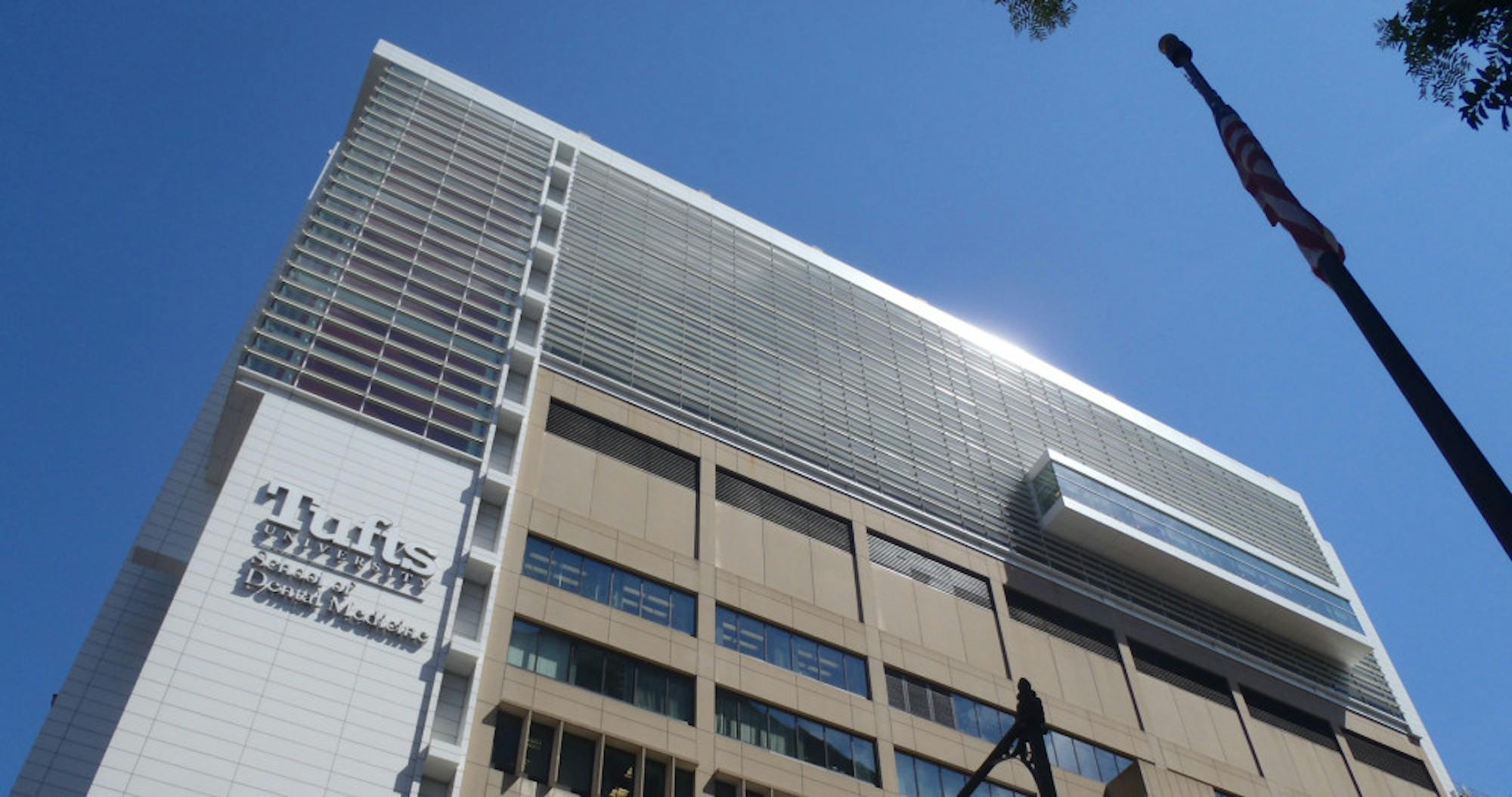After the Faculty Senate issued a resolution on Sept. 30 condemning Tufts’ lack of communication and transparency in itsdecision to lay off employees and reduce salaries at the Tufts University School of Dental Medicine (TUSDM), university officials responded in an Oct. 13 statement that the decision was not within the scope of the Faculty Senate.
The Senate, which includes members from all schools within the university, expressed outrage and concern in its resolution and stated that Tufts’ actions severely damaged trust between faculty and administration.
The resolution cited a July 22 meeting, where Executive Vice President Mike Howard and Vice President for Finance and Treasurer James Hurley presented a report to the Senate on the finances of the university. At the meeting, the Senate asserted that Hurley and Howard did not make clear that major furloughs and budget cuts were on the horizon.
Lynne Pepall, president of the Faculty Senate, said that no one expected any particular school to be harshly affected, and acknowledged the dental school’s difficult financial situation.
“I don't think anyone left that meeting thinking that any particular school was in trouble," Pepall said. "Having said that, the dental school relies significantly on clinical revenue, and that literally just dropped off a cliff.”
Roger Galburt, a TUSDM professor who was let go in September, echoed Pepall's statements.
“In all meetings with senior administrators on both the university and school level, the necessity for this level of action being implemented shortly was not emphasized,” Galburt wrote in an email to the Daily. “Lay-offs and other status changes were referred to as something for later stages of financial correction.”
Galburt, who taught at TUSDM for over 40 years, also took issue with how the school communicated these furloughs to faculty.
“Decisions, some of which ended careers, were communicated individually to those affected directly in very brief conversations, which had been scheduled the previous day,” Galburt said. "After teaching for over 40 years, one day, in a 10-minute Zoom I was told my position was eliminated."
He also compared how TUSDM faculty members' achievements are regarded by the school in comparison to their private practices.
“In [their] practices [dentists] are leaders equivalent to a CEO, President, or Chairman at the University,” Galburt said. “When they come to the school, this is often not recognized or respected.“
Pepall, who is also a professor of economics and chair of the Department of Community Health, spoke to how the TUDSM treats its faculty.
"Faculty don't like to think that we are run like a corporation. We like to think that we're a different kind of organization,” Pepall said. “So I think it bothers faculty to see us treated as though we are like employees that are here today, gone tomorrow.”
The Faculty Senate resolution indicates that the personnel decisions at TUSDM are of intrinsic concern to the Senate, and outlines steps the university can take to increase transparency and to rebuild trust.
In the Oct. 13 statement, Howard and Senior Vice President and Provost Nadine Aubry expressed appreciation for the Senate resolution and input, but challenged the notion that the personnel decisions were within the scope of the Senate’s authority.
“Respectfully, we disagree that school-specific personnel decisions are intrinsically for the Senate to approve or veto. The TUSDM bylaws similarly do not establish any required process for such input,” the statement said.
The statement went on to defend how the university conducted the personnel decisions and invoked the autonomy of individual schools as justification for the decision-making process.
“We believe a dean’s decision to make difficult personnel choices is at the heart of such autonomy,” the statement said. “Dean Karimbux led this initiative and he did so with care and diligence.”
The statement also asserted that Karimbux acted with adequate transparency given the circumstances, and that his decisions were in line with the university’s critical diversity, equity and inclusion principles.
Galburt asserted that the university could have acted in a more transparent and humanistic manner.
“The faculty has no idea as to who was laid-off or had other adjustments to their employment,” Galburt said.
Pepall also addressed the idea of autonomy within individual schools, which was addressed in both the Faculty Senate’s resolution and in the university’s response.
“TUSDM and the communications between the administration and the Senate are of university-wide concern and cannot be shielded from scrutiny by the invocation of school autonomy,” she said.
Galburt provided his own perspective on the impact of the dental school furloughs.
“It felt as if a close friend had suddenly died,” Galburt said. “I was shown the door without an explanation or a goodbye.”
Correction: A previous version of this article incorrectly stated the Galburt was furloughed, when in fact he was let go. The article has been updated to reflect this change. The Daily regrets this error.






